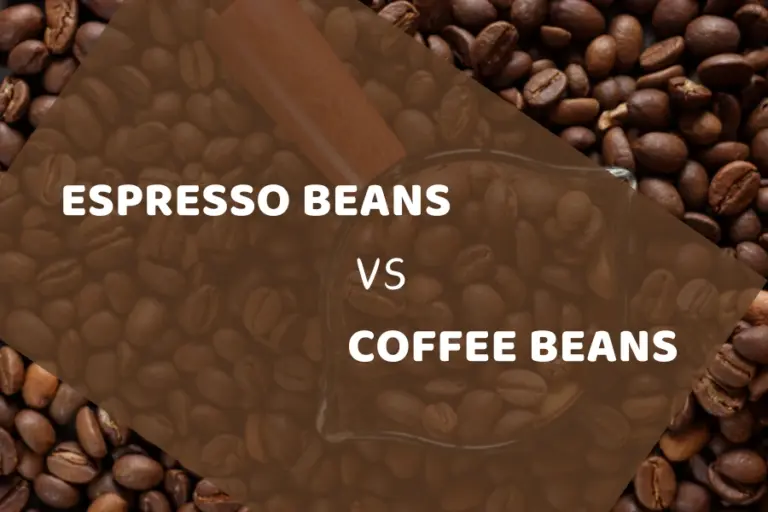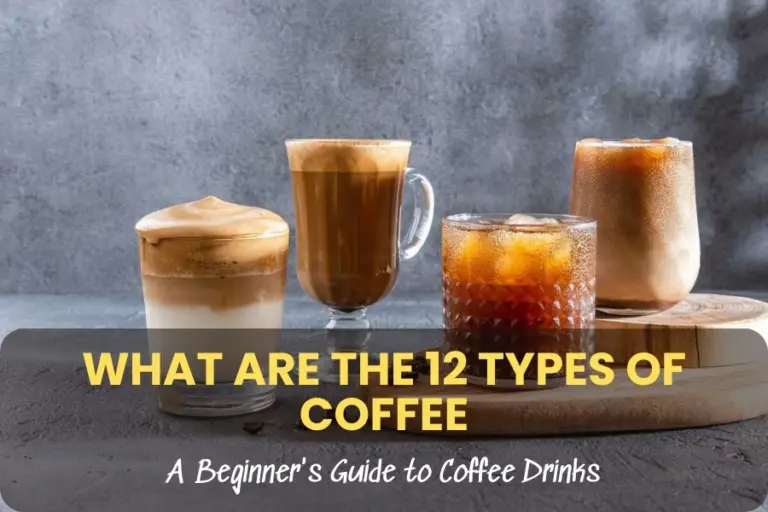Espresso vs Coffee: Key Differences Coffee Lover Should Know
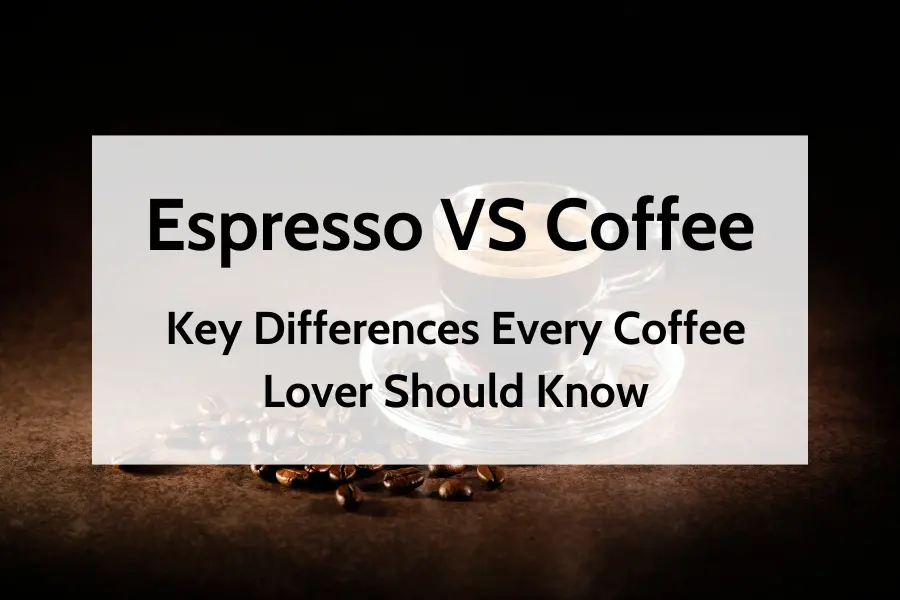
Espresso vs Coffee is a subject likely to generate controversy among coffee lovers. Whereas both drinks stem from the coffee bean, they uniquely remain different in addressing an array of interests. We’ll take your coffee passion to another level with the information about the main difference between espresso and coffee.
In this article, we will venture into the wonderful world of espresso, coffee-making techniques, and taste profiles. We are going to find out the characteristics of rich espresso topped with crema and a smooth, fragrant cup of coffee. Whether you’re a seasoned coffee lover or just a curious newcomer, this exploration will shed light on the fascinating fact of differences between these two caffeinated delights.
What is Espresso?
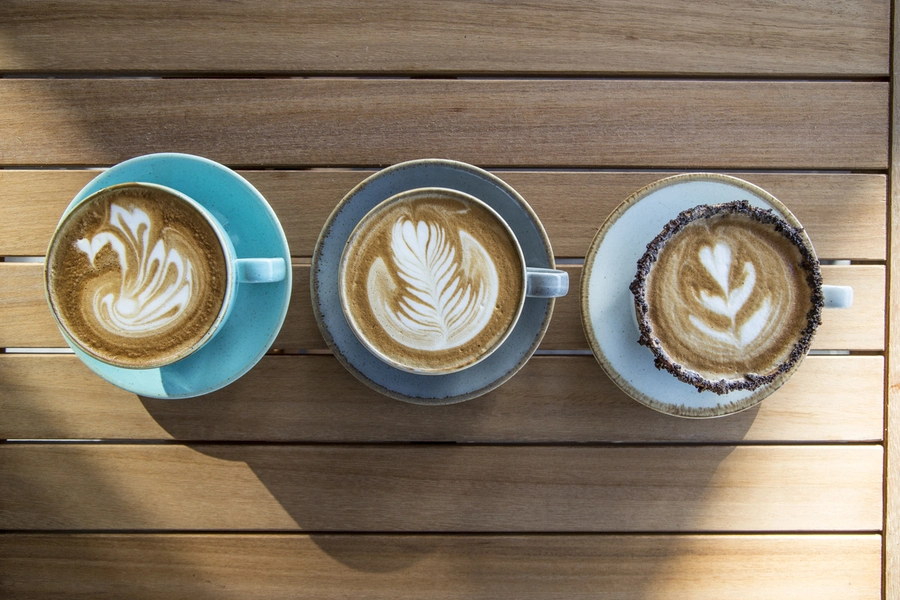
Espresso is a strong, concentrated coffee drink prepared from specially roasted and strongly brewed coffee beans by an espresso machine. The fine beans are ground, packed in a portafilter, and then locked into the machine. After that, hot water at high-pressure forces through the grounds to deliver shots of thick, creamy espresso in one or two-ounce servings.
The espresso machine originated from an Italian inventor named Angelo Moriondo, who patented a certain coffee-brewing device in 1884. Luigi Bezzera developed the first single-serving espresso machine in 1903 and afterward sold the patent to Desiderio Pavoni. Both of them put refinements into the design, which is similar to the modern coffee machines. After several refinements, the machine received a wide response from the public eye at the Milan Fair in 1906 and was commercially set out for the masses.
What is Coffee?
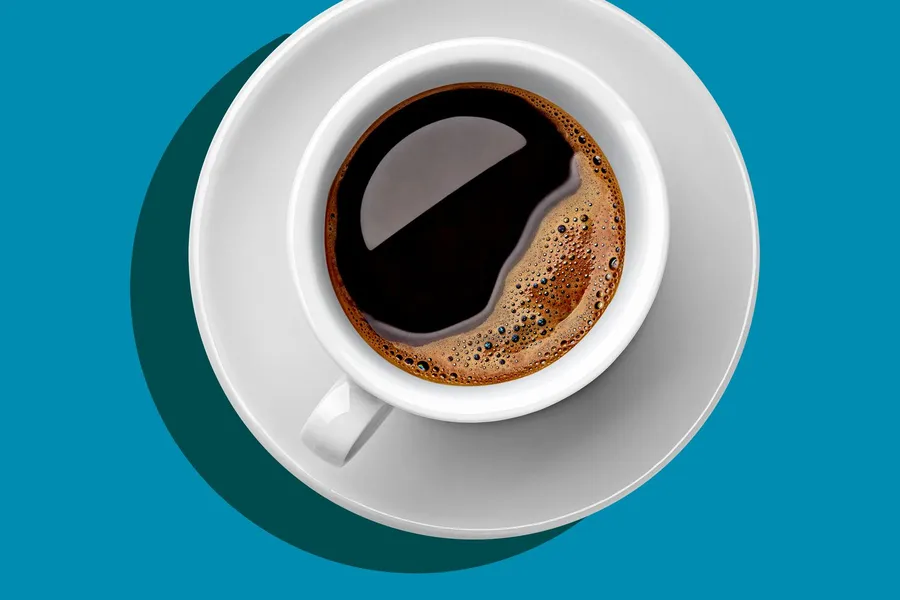
Coffee is a drink that is prepared by steeping the roasted and ground coffee beans with really hot or boiling water. The coffee beans are derived from the coffee plant, which is the part genus Coffea. Such beans are contained within the fruit of this plant called cherries. The beans take about one year to grow, mature, and finally be ready to be picked.
The plants are generally pruned to smaller trees of standard shape and grown under shade, mild climate, and rainfall. They are planted in the Americas, Africa, and temperate Asia between the Tropics of Cancer and Capricorn, the so-called coffee belt or bean belt. This zone in the Western Hemisphere extends from Central Mexico into the Amazon rainforest.
Coffee is somewhat acidic and quite bitter, with beneficial health effects. It also acts as a mild stimulant due to its caffeine content. Coffee is the second most loved drink in the world after tea if water is excluded.
Difference Between Espresso Vs Coffee
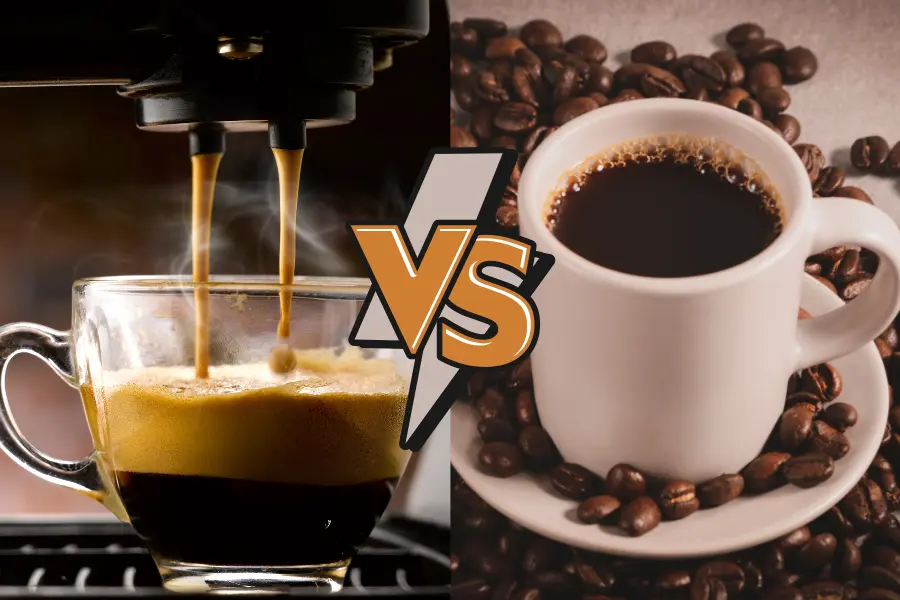
Espresso and coffee are the same things because espresso is a type of coffee. The difference between them is the brewing method used, leading to the difference in the taste, grind size, etc.
Brewing Method
The major difference between espresso and coffee is the brewing method for each type of beverage. Traditional coffee brewing uses methods like drip, pour-over, and French press. This usually takes several minutes.
The espresso machine forces pressurized hot water through very fine grounds to produce espresso (the pressures can be as high as 9 bars). After that, the extraction is a rapid process that takes around 25-30 seconds, producing a concentrated shot. Moreover, the ideal temperature for brewing both the espresso and coffee lies between 195 and 205 Fahrenheit degree.
Taste
The taste is another key factor to know which is espresso. Espresso is a lot bolder and more potent due to its concentration and lack of filtration. It offers much bitterness, acidity, and a rich body with a syrupy characteristic.
However, the traditionally brewed coffee with either drip or pour-over, offers a smooth and balanced taste. This is because the slower extraction allows more flavors to develop, including sweetness, fruitiness, or nutty tastes.
Pressure
We also need to take the pressure during the brewing process into consideration. The espresso machines make use of high pressure in the application (approximately 9 bars) to force hot water through the finely ground coffee beans. The high pressure in the espresso machine greatly minimizes the time for extraction, resulting in a highly concentrated espresso shot.
In contrast, traditional coffee brewing methods like drip, pour-over, and French press are based on gravity or extremely low pressure in drawing flavor from ground coffee. The low pressure allows for a more natural and gentler extraction process where a less concentrated brew will result.
Grind Size
In fact, grind size is one of the most critical factors in producing good espresso and quality coffee. The grind for espresso needs to be finer to allow water under high pressure to extract the best. The smaller the particles, the larger the surface area for the water to interact with, hence giving a strong and full-of-flavor shot.
Contrary, traditional brewing will always be coarser. A coarse grind allows for slower extraction of flavors and oils, yielding a less concentrated but balanced coffee drink. The grind size shall vary according to the intended brewing method and the taste profile one wishes to achieve.
Serving size
Another big difference concerns serving size: the normal serving volume of espresso is usually 1-2 ounces, while for coffee, it is usually 6-12 ounces. The serving size for espresso is much smaller compared to coffee because it is concentrated; thus, a small volume contains a powerful flavor.
The crema
The last distinctive characteristic of espresso is the creation of crema, which is the foamy layer at the top of the shot. The crema is a result of many factors such as high pressure, fine-grind size of the beans, and the release of carbon dioxide within the beans.
It is critical to note that the creamy layer does not just decorate the view of espresso but also plays a significant role in both flavor and aroma. The temperature retention by the cream slows down its cooling, which also releases aromatic compounds.
As the cream is desirable in nature as far as espresso is concerned, how long the cream will last is yet to be told by factors such as bean quality, roast level, grind size, and brewing technique.
| Espresso | Coffee | |
| Grind size | Very fine | Fine, medium, or coarse |
| Roast | Dark | Dark, medium, or light |
| Extraction | Pressurized water | Gravity/Filter |
| Time to brew | 20-30 seconds | 4-12 minutes |
| Serving size | 25-30 ml | 220-250 ml |
| Crema | Yes | No |
Espresso Vs Coffee: Which one is better?
Which is better, white chocolate or black chocolate? That lighthearted question underscores that it is all a matter of personal taste. Some coffee enthusiasts like the strong, energizing boost of a shot of espresso while others prefer the more laid-back experience of sipping on a cup of brewed coffee. Of course, you could always sip on your espresso at your leisure.
Many coffee drinkers enjoy both. There’s just something to be said for beginning the day with a quick cup of brewed coffee and ending it with a rich espresso after an Italian dinner. It is all about the moment in which they are consumed, as both can serve as the perfect choice.
Bottom Lines
Espresso vs. coffee: two drinks, yet different in brewing method, both deriving from the coffee bean source. You should know the subtle differences between them to make all the difference in your coffee experience. Let’s make it easy, espresso refers to a bolder taste while the coffee is opposite. So, the next time you order your favorite coffee drink, take a moment to appreciate the artistry and science behind it.

